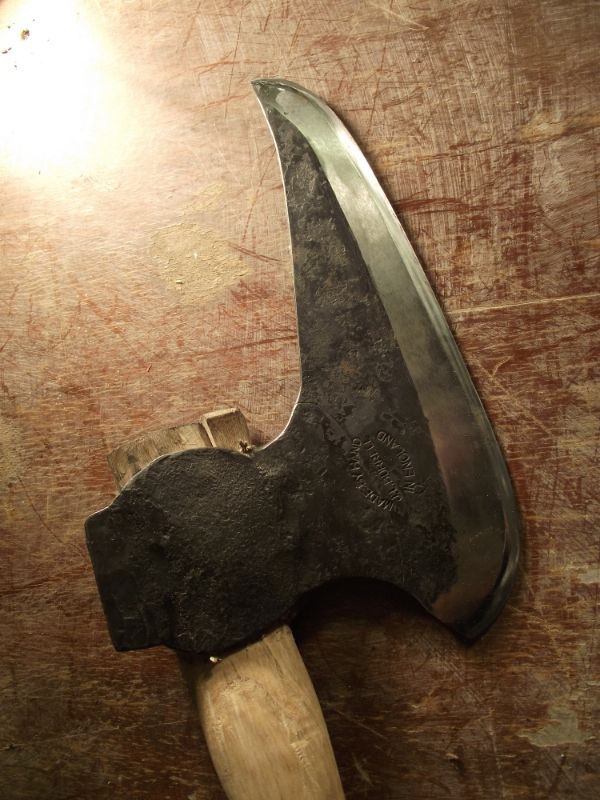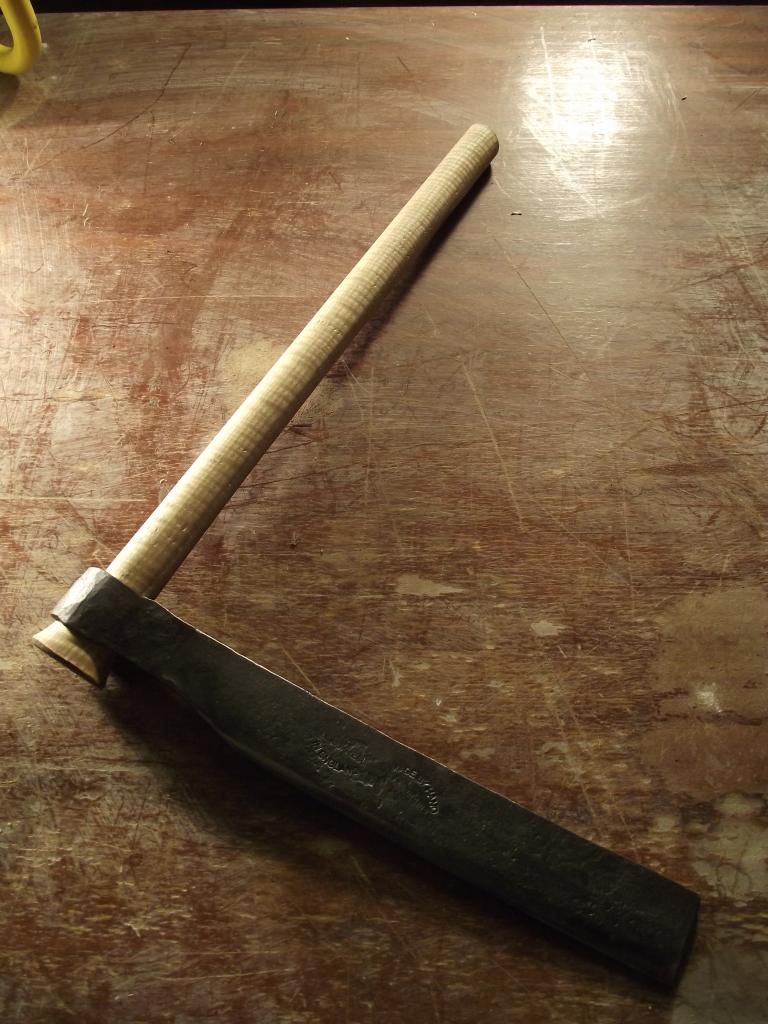These rather strange looking curved blades were nearly an extinct tool until the recent renaissance in green- wood working. The wooden table ware (called “Treen”) that they are instrumental in producing has been ubiquitous throughout Europe for millennia, only in recent decades has industrial process allowed ceramic bowls and plates to become truly commonplace at the table. That said, as recently as the 1950’s and 60’s there were still regions of the UK where the Turners could still be found producing green wood wares for everyday use and more commonly on the continent.
The knives appear, outwardly, to be a simple thing- a bent, single edged blade-
however when one sets about to use and make them their hidden complexity
becomes apparent…
The difference between a hook knife being a pleasure and a pain to use is subtle and nuanced, a matter of Geometry and attention to detail.
Firstly, the blade blanks are forged. The steel I am using here contains between 1.1 and 1.2% carbon.
The difference between a hook knife being a pleasure and a pain to use is subtle and nuanced, a matter of Geometry and attention to detail.
Firstly, the blade blanks are forged. The steel I am using here contains between 1.1 and 1.2% carbon.
The first point of interest that we come across is that in
order for the inside of the blade to be flat on the finished, curved knife, they
must first be hollow-ground whilst the piece is still straight. This is because the inside of the knife will
be compressed when it is bent- making the interior cross section convex, if the
forged-in flatness was left uncorrected.
Additionally, the blunt edge must be ground to a radius that
doesn’t interfere with the curving cut, this again is done when the blade is
straight.
The bevel at the edge is also partially ground at this point
as it would be close to impossible to grind one evenly once the piece is
curved. If it is left too thick, it will more difficult to sharpen after
hardening as it will be… well, hard. If it is too thinly ground, the edge can
be easily overheated causing the steel to lose carbon and thus making it harden
less effectively.
These different shapes can be seen together in cross
section.
After this first grinding phase the work is reheated and the
initial, acute bend in the ricasso (blunt) area is put and the curve is delicately
put in either around a former for the consistently radius “twca cam” style
traditional knife or freehand for the modern, versatile “compound” hook. Care being taken not to damage the ground in
cross section, which could be easily done whilst the metal is soft.
Twca Cam blades
Once hardened they are tempered for an hour to relieve the brittleness
and then ground sharp. This is tricky because each blade must be
continuously moved to keep the grind smooth and even. The blades are sharpened and
polished with a high grit buffing compound, leaving a mirror finish.
After final sharpening I give each blade its second temper
for an hour to ensure it is fully stress relieved and at it’s most resilient.
The tempering process causes a range of oxide colours to
form on the steel surface, these colours precisely indicate temperature. This golden
colour, whilst permanent is exactly one molecule thick and so, easily removed
with a gentle stropping- it is, though, very beautiful and as such I have been
leaving it in place as a proof and a decoration.
These knives are an interesting thing to make and ive been
very satisfied with how well they cut.
Please
contact me either on my Facebook page or by leaving a comment here
















